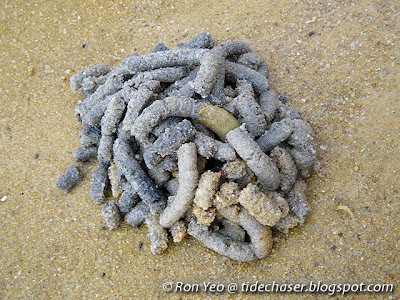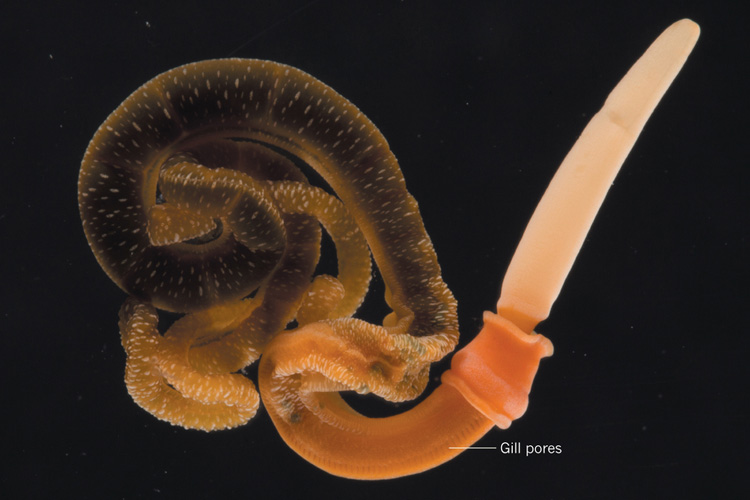
Others feed on organic material suspended in the water, which they can draw into the mouth using the cilia on the gill bars. Many acorn worms are detritus feeders, eating sand or mud and extracting organic detritus. Acorn worms move only sluggishly, using ciliary action and peristalsis of the proboscis.

Some produce a bromide compound that gives them a medicinal smell and might protect them from bacteria and predators.

Acorn worm skin#
The skin is covered with cilia as well as glands that secrete mucus. The creature's mouth is located at the collar behind the proboscis. The body is made up of three main parts: an acorn-shaped proboscis, a short fleshy collar that lies behind it, and a long, worm-like trunk. Most acorn worms range from 9 to 45 centimetres (3.5 to 17.7 in) in length, with the largest species, Balanoglossus gigas, reaching 1.5 metres (5 ft) or more. Due to secretions containing elements like iodine, the animals have an iodoform-like smell. The body length normally range from 2 centimetres (0.79 in) to 2.5 metres (8 ft 2 in) ( Balanoglossus gigas), but one species, Meioglossus psammophilus, only reach 0.6 millimetres (0.024 in). It is assumed that the ancestors of acorn worms used to live in tubes like their relatives Pterobranchia, but that they eventually started to live a safer and more sheltered existence in sediment burrows instead.

However, the early 21st century has seen the description of a new family, the Torquaratoridae, evidently limited to the deep sea, in which most of the species crawl on the surface of the ocean bottom and alternatively rise into the water column, evidently to drift to new foraging sites. Until recently, it was thought that all species lived in the sediment on the seabed, subsisting as deposit feeders or suspension feeders. Two families- Harrimaniidae and Ptychoderidae-separated at least 370 million years ago. There are 111 known species of acorn worm in the world, the main species for research being Saccoglossus kowalevskii. The closest non-hemichordate relatives of the Enteropneusta are the echinoderms. The acorn worms or Enteropneusta are a hemichordate class of invertebrates consisting of one order of the same name.


 0 kommentar(er)
0 kommentar(er)
